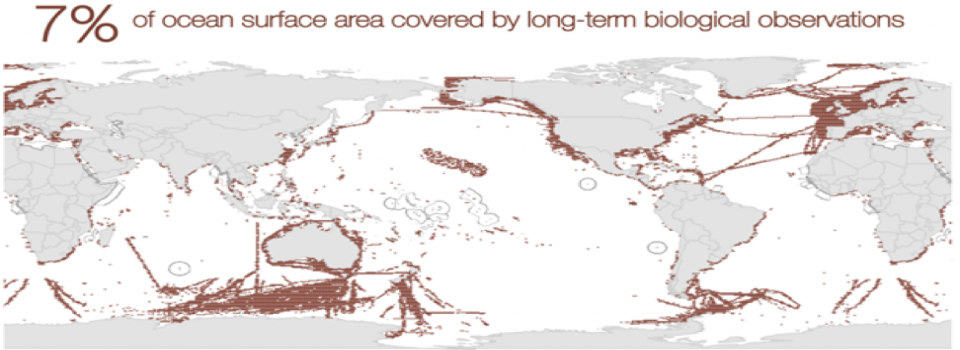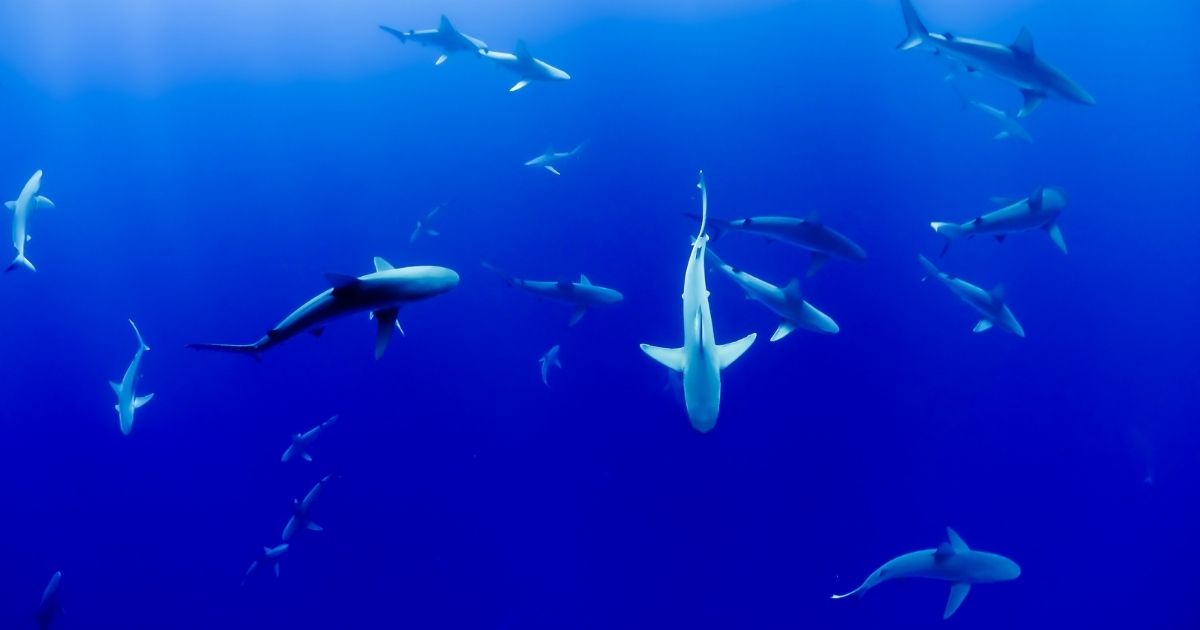The GOOS BioEco Panel and its partners undertook a global survey and published their findings in a new paper
Teeming with abundant life, the ocean is an important source of food and livelihoods, with over three billion people in the world depending on it. Unfortunately, marine life and ocean health are declining. But how rapidly this decline is happening and where it is the fastest are dangerous gaps in our understanding of global marine ecosystems.
While nations, foundations and businesses are ready to invest in mitigating biodiversity decline through actions such as restoration and carbon sequestration, the lack of information and agreed priorities can make this investment a lottery. Knowledge of the status, variability and diversity of marine life is vital to de-risk such investments and ensure positive outcomes. This knowledge has to come from consistent observations of life in the ocean.
The Global Ocean Observing System (GOOS) led by UNESCO, aims to lead the ocean observing community and grow an integrated, responsive and sustained observing system. A fundamental concept to the implementation of GOOS are the Essential Ocean Variables (EOVs) – key measurements to describe the state of the ocean. The GOOS Biology and Ecosystems (BioEco) expert panel has identified 13 biological EOVs, such as microbes, phytoplankton, fish, marine mammals, macroalgae and seagrass. These 13 EOVs play a critical role in addressing the information needs of 24 international conventions and multilateral agreements and play an essential role in addressing our lack of information about the health of marine life. However, to what extent is such biological EOV information currently being measured worldwide?
 To answer this question, the GOOS BioEco Panel and its partners undertook a global survey and published their findings in Frontiers in Marine Science last week. Despite a 58% response rate to the survey, the trends demonstrate a clear need for prioritized action. The findings revealed that the coverage of biological EOVs is incomplete and uneven - in fact, the 203 active long-term observing programs that responded to the survey cover only 7% of the entire ocean surface. The open ocean and some parts of the South American, Eastern European, Asian, Oceania and African coasts were especially underrepresented. The results are alarming, as they suggest that the lack of information is often greatest where it is needed the most: in areas of high biodiversity with intense human pressures.
To answer this question, the GOOS BioEco Panel and its partners undertook a global survey and published their findings in Frontiers in Marine Science last week. Despite a 58% response rate to the survey, the trends demonstrate a clear need for prioritized action. The findings revealed that the coverage of biological EOVs is incomplete and uneven - in fact, the 203 active long-term observing programs that responded to the survey cover only 7% of the entire ocean surface. The open ocean and some parts of the South American, Eastern European, Asian, Oceania and African coasts were especially underrepresented. The results are alarming, as they suggest that the lack of information is often greatest where it is needed the most: in areas of high biodiversity with intense human pressures.
The Survey was undertaken by the GOOS BioEco panel in partnership with Future Earth and the National Center for Ecological Analysis and Synthesis. These findings will allow GOOS and its partners to prioritize and focus its activities to build global coverage for the EOVs. This will require sustaining and expanding existing long-term observing programs, encouraging better communication and coordination between them, as well as connecting local programs into global systems. New capacity is also needed to fill priority gaps in underrepresented areas and developing countries, which are experiencing intense human pressure on their biological resources.
"These gaps may make it challenging to answer the larger-scale questions about ocean change that we so urgently need. So we have a real opportunity to continue to build this community – both by coordinating the existing programs and filling these gaps in sampling" says Erin Satterthwaite, lead author on the paper and a marine ecologist working with GOOS and its partners at the Scripps Institution of Oceanography.
“GOOS is building partnerships to ensure that biological observations are part of our routine global ocean observing efforts, to fill gaps in our understanding of the impacts of change on marine life, and to inform progress towards national and international goals for protection and sustainable development. Such improvements are necessary for informed development and to ensure the well-being of human communities globally,” says Gabrielle Canonico, Co-Chair of the GOOS Biology & Ecosystem Panel.
The issue of declining marine biodiversity goes beyond one nation. As the ocean is an interconnected system, to detect changes and understand their consequences we need an equally interconnected observing system, which is the prime goal of GOOS. Such coordinated efforts to observe marine life will improve the effectiveness of biodiversity protection actions, this way de-risking investments and, ultimately, guiding us on the right path towards a healthy and sustainable ocean that continues to cover the needs of our societies.



